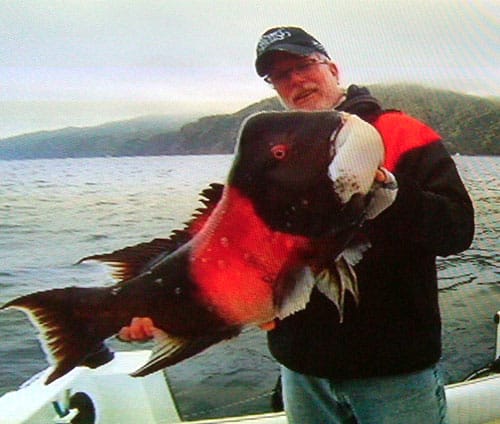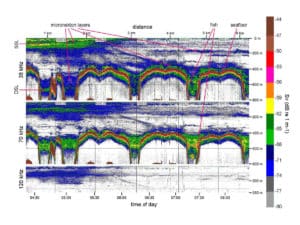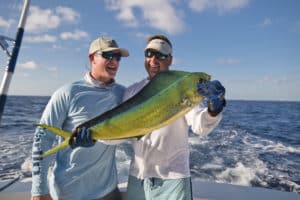
hendricks bottomfish blog
Newcomers marvel at the variety of fish inhabiting the deep ocean waters off Southern California. Fifty-six colorful species of rockfish means you never know what you might hook. Plus, there are California sheephead, ocean whitefish and cabezon, as well as powerful lingcod.
All of these fish live on or around structure — rocks and wrecks. Some species such as bocaccio, olive rockfish and ocean whitefish suspend over structure, while fish like lingcod, sheephead and copper rockfish hang closer to the bottom.
Whether fishing Southern California’s offshore islands or coastal areas, look for structure in 120 to 360 feet of water (360 feet is the maximum legal depth at which you can fish for bottom fish off Southern California). At these depths, drift fishing is the preferred method.
Bottom fish often collect in one particular side of a structure zone, so you should use the fish finder to locate fish concentrations, usually on the structure’s up-current side.
Braided lines offer a big advantage when fishing deep water, improving sensitivity and hook-ups. Low-stretch braid also helps keep fish from diving back into the rocks.
A medium-size conventional reel such as a Penn International 975 Lever Drag or Shimano Torium 20 filled with 50-pound coated braid, matched to a seven- to eight-foot, medium-action rod such as a Cal-Star 870H or Bluewater Carnage 800M, works well.
For terminal tackle, you are legally allowed to fish with two hooks per leader in California. Tie two 10-inch-long loops with free-sliding hooks on each. Use a barrel swivel to tie the leader to the main braided line, and tie a torpedo sinker to the bottom.
The sinker size depends on water depth. Carry a selection of torpedos ranging from three to 20 ounces. Match the hook size to the bait size using a selection ranging from 2 to 2/0.
For bait, live sardines are the most common, and they’re usually fished on 1/0 to 3/0 hooks. Three-inch-long squid strips are also effective, durable and easy to fish using 2/0 to 3/0 hooks.
Remember — you never know what might bite, so be prepared. You might hook a three-pound vermillion rockfish or a 30-pound lingcod. That’s the magic of bottom fishing off Southern California.
Rockfish Restrictions
In addition to new state-mandated Marine Protected Areas with year-around fishing closures, there are also daily bag and size limits, with sub-limits for bottomfish off Southern California. For example, while you can keep 10 rockfish in combination for the day, you can only take two bocaccio, and each of these must be at least 10 inches long. Also, there is a year-around prohibition on taking any canary, cowcod, bronzespotted and yelloweye rockfish. For the most up-to-date regulations and closures — as well as guides to identifying the 56 varieties of rockfish and other groundfish — visit the California Department of Fish and Game website at dfg.ca.gov/marine.






